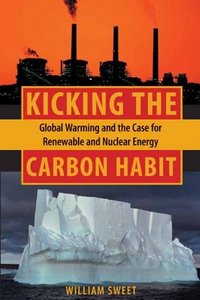Twenty years ago (April 25, 1986), the Chernobyl nuclear accident sent a plume of radiation into the air above Ukraine. The word "Chernobyl" remains the most emotionally charged argument used by the opponents of nuclear energy. But if examined carefully, the main lesson from Chernobyl may be that what happened there cannot occur in the better designed light water reactors used in the United States, and most of the rest of the world. William Sweet, the author of the commentary below, has also authored Kicking the Carbon Habit: Global Warming and the Case for Renewable and Nuclear Energy.
(p. A23) . . . , though it went unnoticed at the time and has been inadequately appreciated since, Chernobyl also cast into relief the positive features of the reactors used in the United States and most other advanced industrial countries.
The reactor at Chernobyl belonged to a class that was especially vulnerable to runaway reactions. When operating at low power, if such reactors lost water, their reactivity could suddenly take off and very rapidly reach a threshold beyond which they could only explode. Making matters worse, surprisingly little more pressure than normal in the machine’s water channels would lift its lid, snapping the vital control rods and fuel channels that entered the reactor’s core.
On the night of April 25, 1986, poorly trained and supervised plant operators conducted an ill-conceived experiment, putting the machine into the very state in which reactivity was most likely to spike. Within a fraction of a second, the reactor went from being barely on to power levels many times higher than the maximum intended.
This kind of accident cannot happen in the so-called light water reactors used in the United States and most of Western Europe and Asia. In these reactors, the water functions not only as a coolant but as a "moderator": self-sustaining nuclear chain reactions cannot take place in its absence. This is a very useful passive safety feature. If coolant runs low, there is still a danger of a core meltdown, because the fuel retains heat; but the reactor will have automatically and immediately turned itself off.
For the full commentary, see:
WILLIAM SWEET. "The Nuclear Option." The New York Times (Weds., April 26, 2006): A23.
The reference to Sweet’s related book is:
Sweet, William. Kicking the Carbon Habit: Global Warming and the Case for Renewable and Nuclear Energy. Columbia University Press, 2006.
 Source of book image: http://www.amazon.com/gp/product/0231137109/sr=8-1/qid=1146071688/ref=sr_1_1/104-5668094-9083929?%5Fencoding=UTF8
Source of book image: http://www.amazon.com/gp/product/0231137109/sr=8-1/qid=1146071688/ref=sr_1_1/104-5668094-9083929?%5Fencoding=UTF8


what is never mentioned by proponenets of nuclear reactors is the environmental cost due to mining uranium,there is a mountain of u mining tailings along side a river near moab utah that is being swept down river and reeks of ammonia used in the extraction process. the us gov. estimates it will take 10 years and billions to move this waste 5 miles from the river onto the ute reservation. the indians lose again. the incessant supply of radioactive waste is spread all around the world. when my brother worked for bechtel as a nuclear engineer at san onofre’s unit one the F.B.I. arrested the entire security for selling cocaine to ALL the employee’s building the plant. 1 year later the secondary cooling system was HOT tested, there were over 10,000 welding leaks. when the trained operators came a year after that they found the pre-operational procedure manuals to be incomprehensible to them and totally useless. shortly after the start up of unit 1 bechtel began designing the Big Dig project in New York. does nuclear energy sound safe to you?